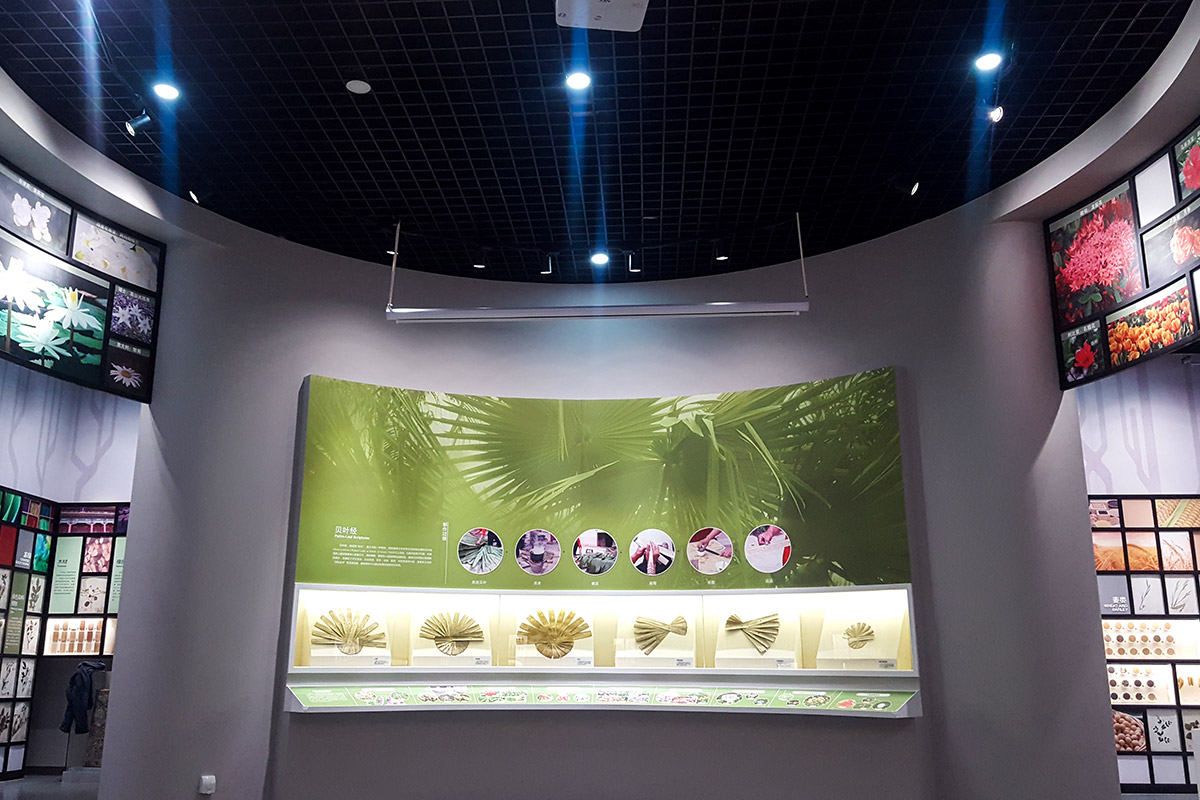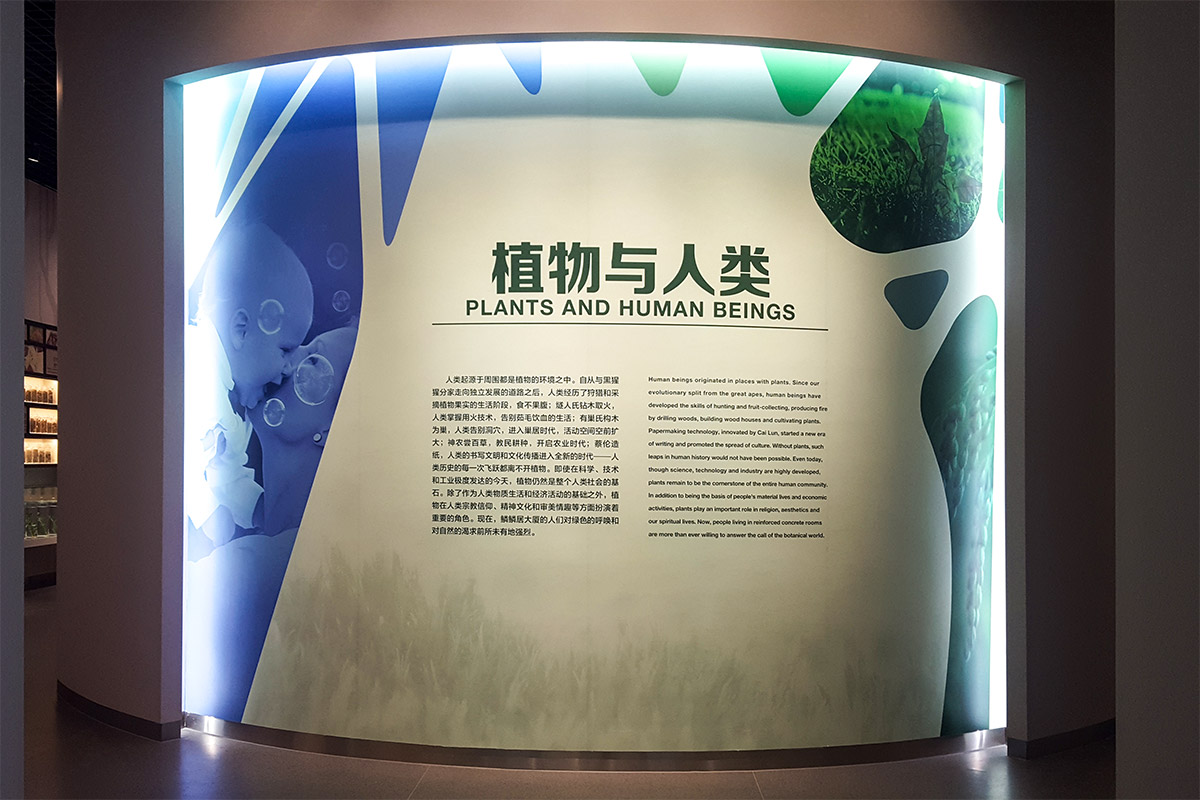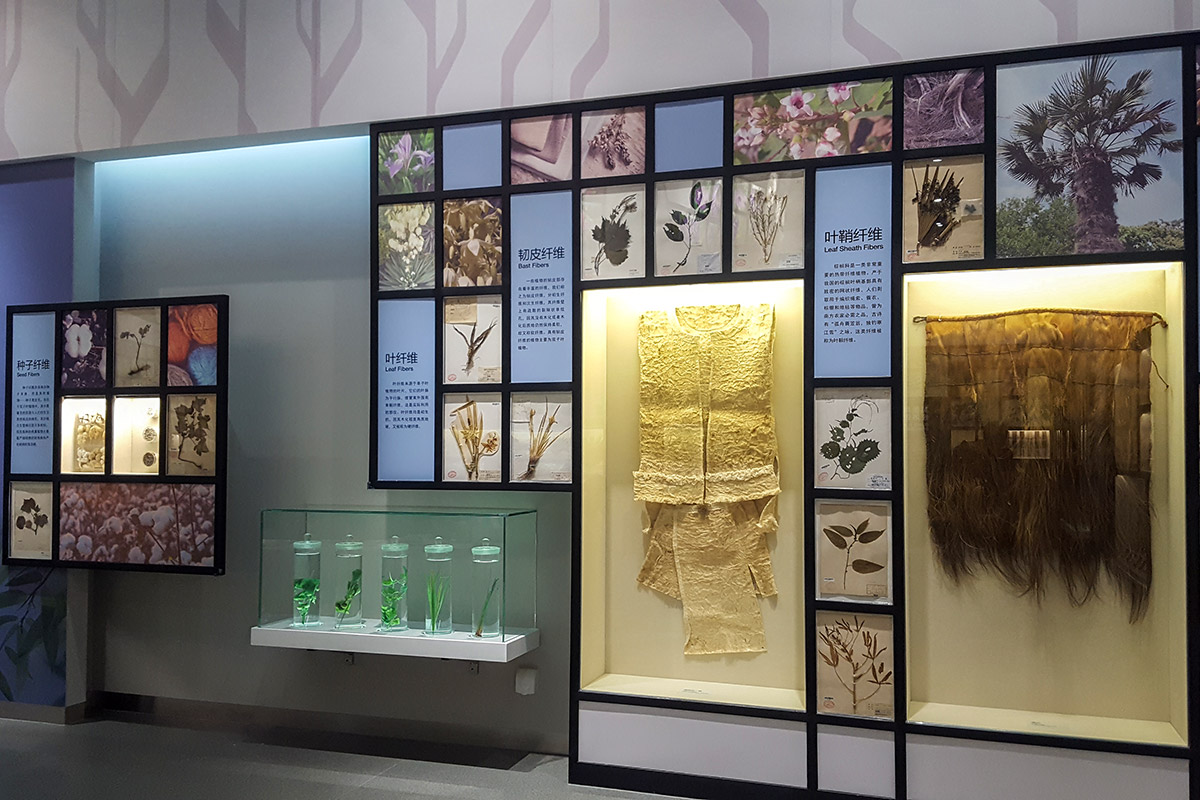Position:Home > Exhibition> Plant World
Exhibition
Plant World
The renewed Plant World exhibition opened on June 29th, 2018.
Plant World has been one of the four permanent exhibitions since 1958 when the museum first opened to the public. The reconstruction of the exhibition was finished in 2018, after months of planning and fabrication.

Plant World is now located on the second floor of the north wing in the Exhibition Building. The exhibition area is more than 850 square meters, with over 1,200 botanic fossils and existent plant specimens on display. Plant World is classified into three halls: “The Evolution of Plant”, “Diversification and Adaptation of Angiosperms” and “Plants and Humans Beings”.

The exhibition features massive number of botanic fossils, reconstructions, restored dioramas and existent plant specimens, illustrating the evolution of lower plants and higher plants, and their role and function in human life.
Plant World introduces cyanobacteria, symbiogenesis, algae, bryophytes, psilophytes, arthrophytes, true ferns, progymnosperms, seed ferns, cycads, ginkgoes, conifers, Gnetales and angiosperms according to the evolutionary timeline.

The Diversification and Adaptation of Angiosperms hall is divided into two parts. One section delineates the prosperity of angiosperms by demonstrating the various shapes of leaves, colorful flowers and different fantastic fruits and seeds. The other shows how angiosperms adapt to the environment. Six types of vegetation are displayed, including tropical rain forests, mangroves, desert plants, alpines, and also carnivorous and symbiotic plants.

The Plants and Humans hall is designed into two concentric circles. The exterior shows how plants are closely related with human civilization. It comprises of seven units about edible plants, medicinal plants, oil plants, fiber plants, fragrant plants, and other commercial plants. Whereas the interior displays the national flowers for more than 50 countries and the precious Beiyejing or Pattra-Leaf Scripture from Dai nationality in Xishuangbanna, Yunnan..
Want to know more about plants? Come and visit Beijing Museum of Natural History. Let’s start an amazing journey together!